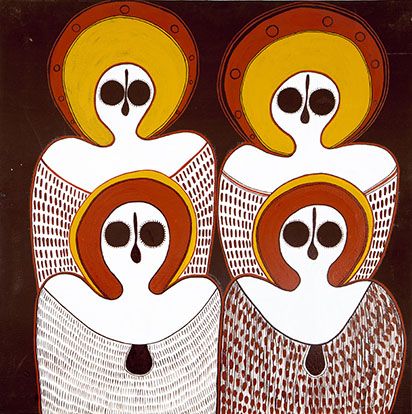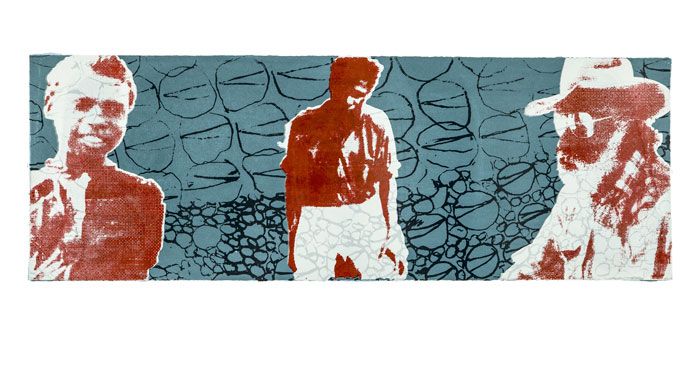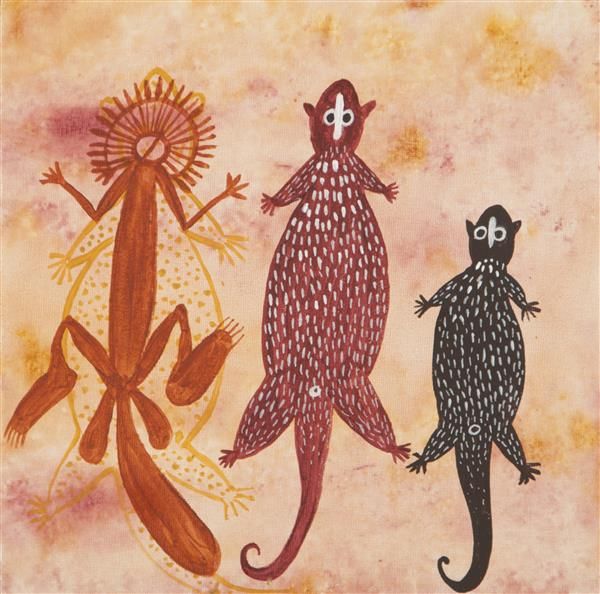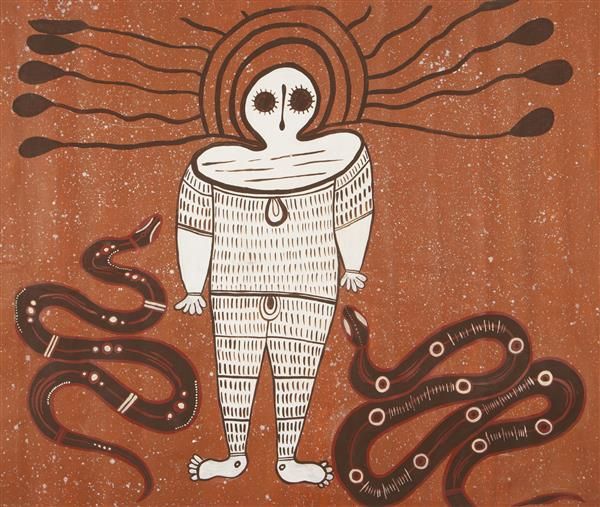Desert River Sea, Kimberley Art Then & Now
calling to country - Namarali
The concept for Mowanjum Arts' commission for Desert River Sea stemmed from a long-term project happening at the art and culture centre at this time: the development of the Mowanjum Museum rock art education space. Ignited by a desire to educate Wandina Unguud people and the general public about cultural protocols relating to visiting rock art sites, the work draws on content collected on a rare trip to the sacred Namarali Cave whereby Worrorra Elder Donny Woolagoodja lead younger generations through the correct processes.
Concern for the protection of country and culture has been the driving force behind this project. As many Wandjina Unguud people do not live on their homelands and the extreme terrain makes access challenging and expensive, the digital display of rock art sites supports elders to reinforce cultural teaching to new generations who are growing up away from their homelands. Further to this, of the tourists streaming into Wandjina Unguud country each year, many do not consult with custodians and therefore jeopardise the security, preservation and stability of cultural sites, while exposing themselves and Traditional Owners to the spiritual repercussions of unauthorised visitation.This video shows an interview with Worrorra leader Leah Umbagai sitting outside Namarali Cave in conversation with Peter Veth. Here she discusses the importance of teaching outsiders how to respect Country, how to approach Country and why visitors should not go unguided.
“Feral animals, white ants, wasps, rain, dust, fire and people, can destroy rock art. It is difficult to go back on country to visit our traditional caves, our elders are getting too old, they have medical conditions that prevent them from travelling. A virtual cave will show our generations to come how the rock art looked during our lifetime”. Sherika Nulgit, Mowanjum Arts
“A 3D virtual cave would support hard grounded proof that Indigenous culture has existed for many thousands of years. Working alongside scientists will give our people an idea of how to document rock art and an opportunity to see how well preserved the paintings are at this time. Seeing rock art will educate artists on the different mediums and techniques used in the past”. Artist Leah Umbagai
Conversations with Desert River Sea have settled on the following outputs (including status reports):
- 3D rendered cave fly through - Lightwell to generate model, experiment with outside lighting options, create pathway, export. Aim to complete by end of April.
- Soundscape - Radio 6DBY will support creation, to be completed by end of April.
- Artworks made as outcome of Namarali Trip - all works complete.
- Video - first draft completed.
The proposed project will need credits as outlined:
- Department of Aboriginal Affairs
- Dolord Mindi
- Mowanjum ArtsMowanjum museum PROJECT BACKGROUND
Mowanjum Arts' interest in a virtual 3D museum display developed from the Mowanjum New Museum initiative: a long-term project launched in February 2016, which aims to make the Mowanjum Community Collection accessible to clients for educational and cultural preservation purposes. Clients are identified as Mowanjum Community members and people from related homelands, wider Derby community, national and international visitors. Interactive audio visual experiences explore storytelling in ways never seen before in Mowanjum, supported by materials and objects from the Mowanjum Collection. Mowanjum Collection team and community advisors have identified six overarching museum themes: Songs on Country, Art and Country, Community leaders, Dreamtime stories, Living on Country and Kinship on Country. Mowanjum Arts recognises an existing gap in public educational resources and aims to clarify the link between rock art and current art production by Mowanjum artists. Law and culture is written onto rock surfaces, rock art symbolises events, dreamtime stories, law and culture, messages that still hold importance in contemporary times. Aboriginal people see preservation and education as being extremely important.
Situated at the entry point to one of the great tourism adventures in Australia – The Gibb River Road - Mowanjum Arts is in a prime position to educate visitors about Kimberley Rock Art focusing on the following learning areas: a) Rock art creation and heritage; b) Dreamtime stories; c) Cultural protocols; d) Conservation and management (CRARM); e) How to protect rock art; f) What to do if a tourist finds rock art; and g) What Traditional Owners expect from visitors.
The key learning areas are:
- Rock Art cultural protocols and practices.
- Rock Art life cycle including risks and rejuvenation practices.
- Rock Art stories and symbolism including Wandjina, Gyorn Gyorn, Wunggurr animals.
- Understanding and respecting country.
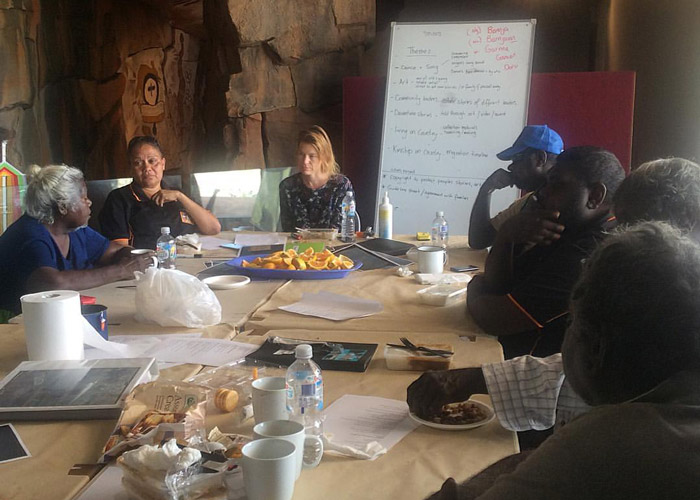
Traditional Owners from three language groups meet to discuss the proposed rock art education space.
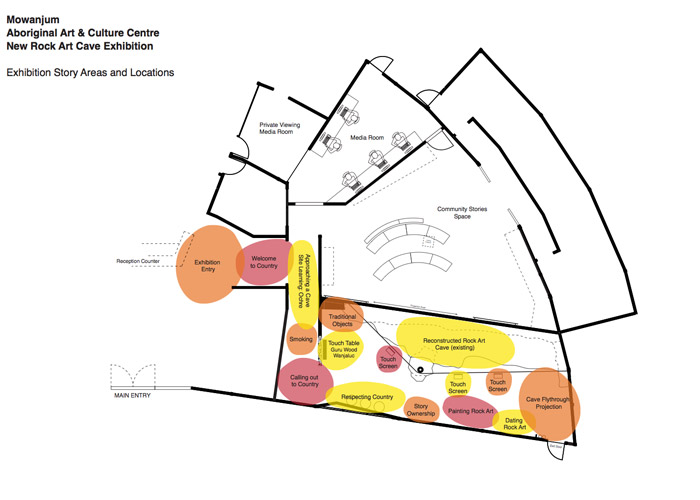
Plan showing learning zones within the Rock Art Education Space.

Dolord Mindi advisory meeting to discuss rock art, song and dance educational spaces.
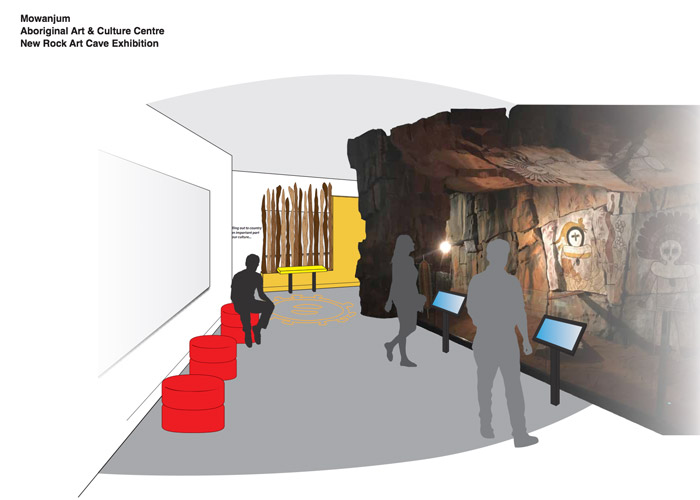
Illustration of the Rock Art Education Space showing touch screens that will display Namarali tour and rock art index.
MOWANJUM ART'S MUSUEM STAGE 1 - VISION
Visitors will walk through a passage of learning that reflects how someone would approach a cave in real life. Guided by cultural principles, visitors are lead through an audio-visual experience that incorporates innovative technology to support the communication of cultural, archaeological and anthropological information.
OUTLINE OF TRIP to namarali cave
The trip to Namarali cave on Worrorra country occurred over five days in October 2016.
Trip participants included representatives from University of Western Australia, Rock Art Centre for Rock Art Research and Management Peter Veth, Sven Ouzman, and Paul Bourke (technology consultant, 3D virtual specialist).
Mowanjum Art Centre Staff: Manager Leah Umbagai, Dolord Mindi Project Manager Katie Breckon, Arts Workers Maitland Ngerdu, Cecila Umbagai, Kirsty Burgu.
Mowanjum Community members and artists: Donny Woolagoodja, Laurel Burgu, Kirsty Burgu, Daphine Burgu, Francis Woolagoodja
Children: Kelly Burgu, Talin Nando, Saskia Burgu, Gary Umbagai, Sierra Nando
Day 1 Freshwater Cove: Team were broken into groups and airlifted by helicopter from the beach to a site just below the cave. Everybody waited in this spot until the entire group had gathered together. Once together Donny Woolagoodja lead the group into the cave by first taking us through a cultural induction. This was significant because there were members in the group from Worrorra language group who a) Had never been to the cave before and b) Were uncertain of the cultural protocol for entering the cave.
On the Monday morning Leah Umbagai revisited the cave and discussed the trip on camera during an interview with Katie Breckon and Peter Veth.
After every trip to the cave researchers and Worrorra people were cleansed during a smoking ceremony on the beach at Freshwater Cove. This happened over a three-day period. The experience was an enriching learning experience for all involved, including Worrorra people who are still learning how to look after people on country and want to learn these processes.
Namarali is an important cultural site. It is the Wandjina displayed in the Sydney 2000 Olympics, as depicted by Worrorra Elder Donny Woolagoodja. It is a Department of Aboriginal Affairs registered site complex first recorded in 1929 by Reverend Love with Traditional Owners, who were at the time repainting the rock art. This is a sacred site that is at high risk of unauthorised visitation, so recording it with modern technology – that is more comprehensive and adaptable to current forms of presentation and interaction than current photographic and even video recordings - is a logical and necessary approach.
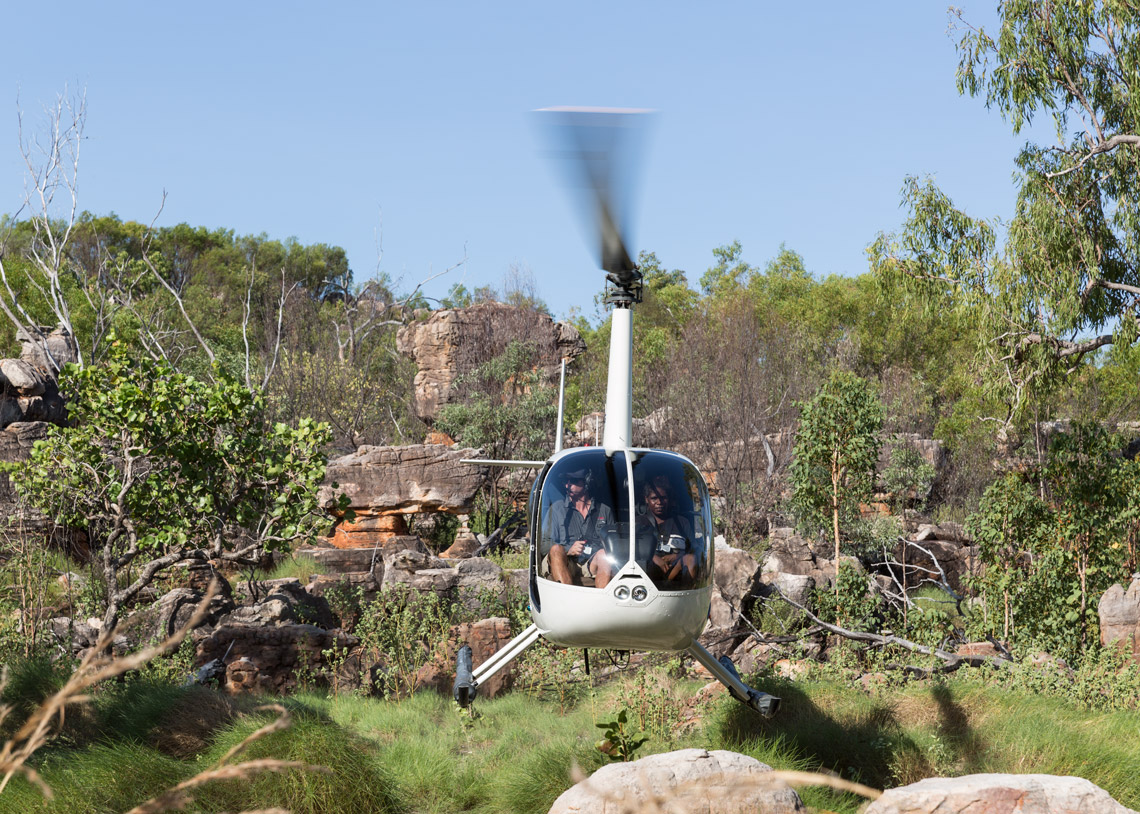
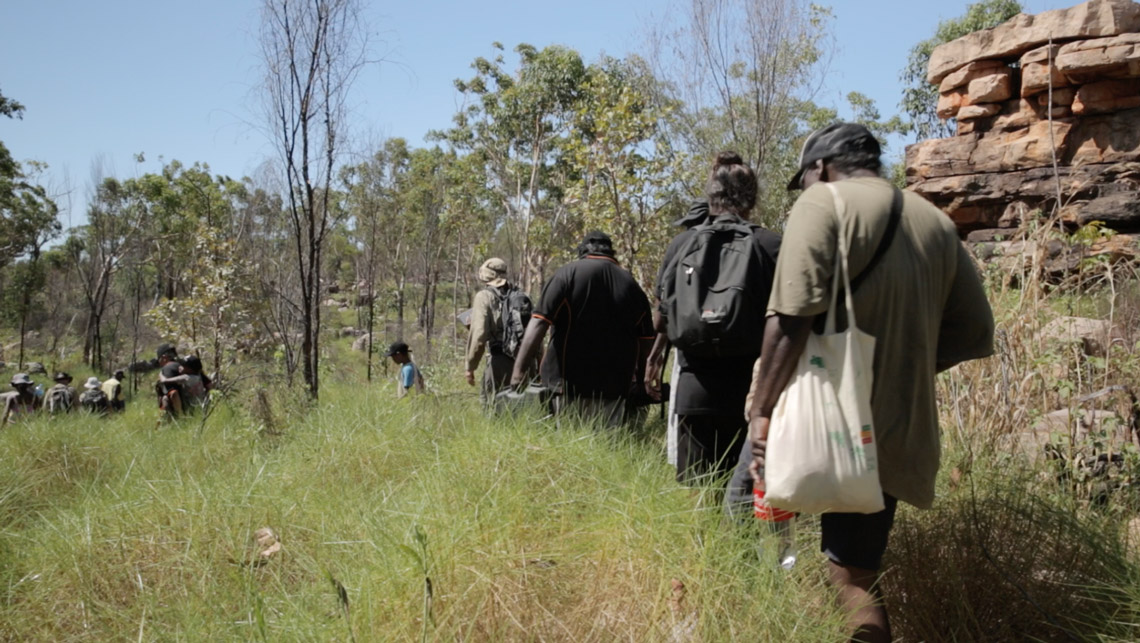
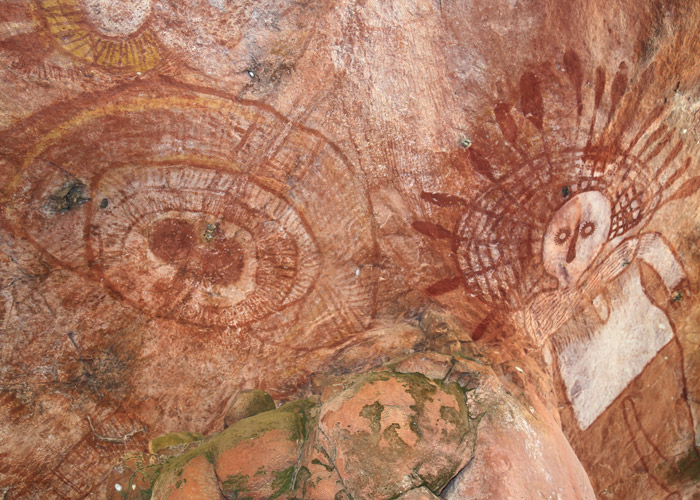
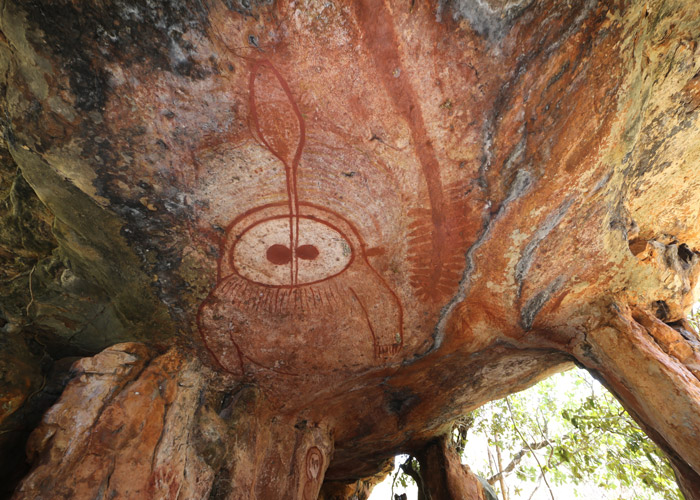
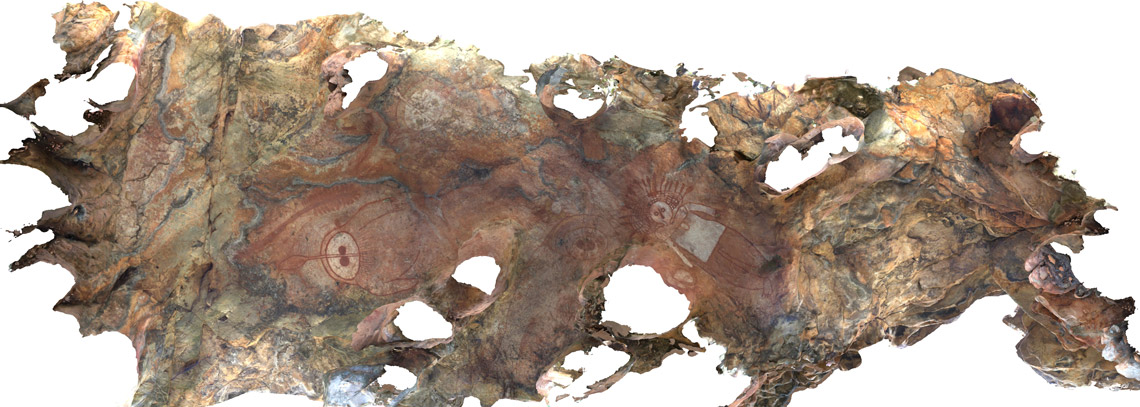
ARTWORK
Artwork was created in response to the Namarali cave and rock art site visit by Mowanjum artists and young people who participated in the trip.
IMAGES OF ART MAKING
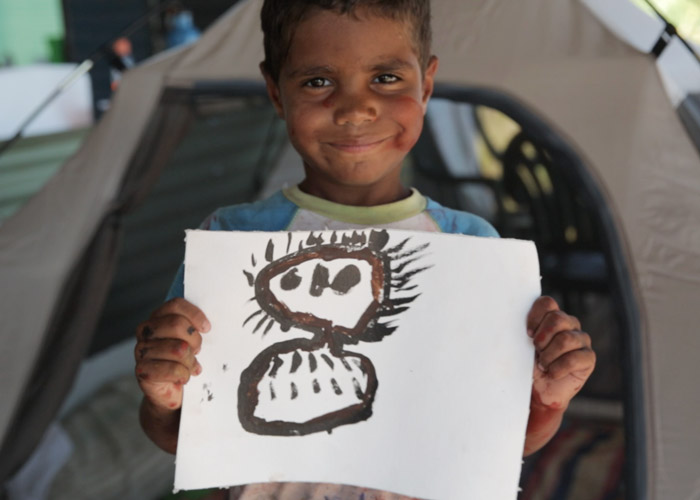
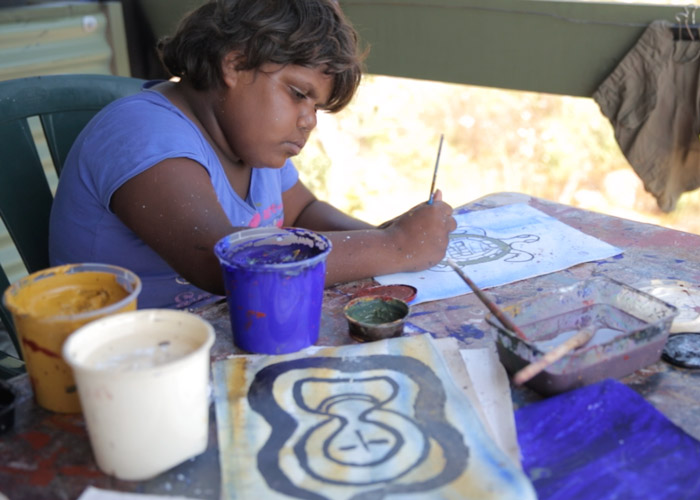
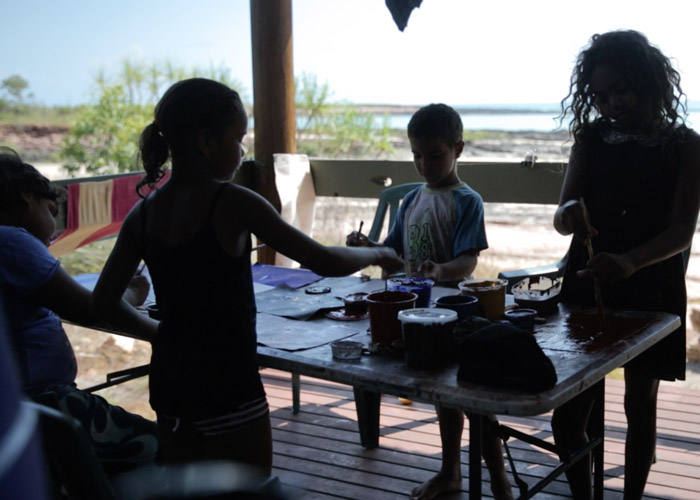
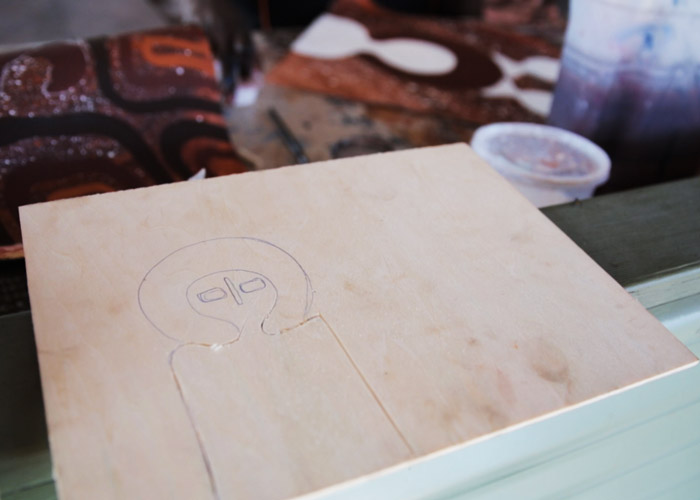

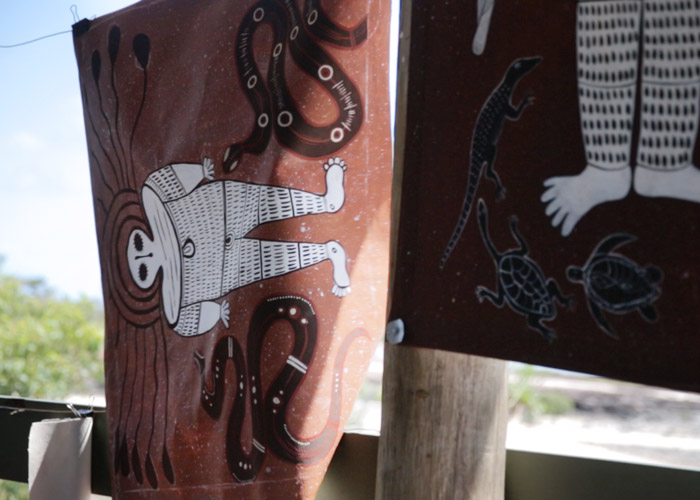
MOwanjum artist | Cecila Umbagai
The following are photographs by Artist Cecila Umbagai documenting aspects of the trip to Namarali Cave.
For all the young people, it was the first time they had visited Namarali.
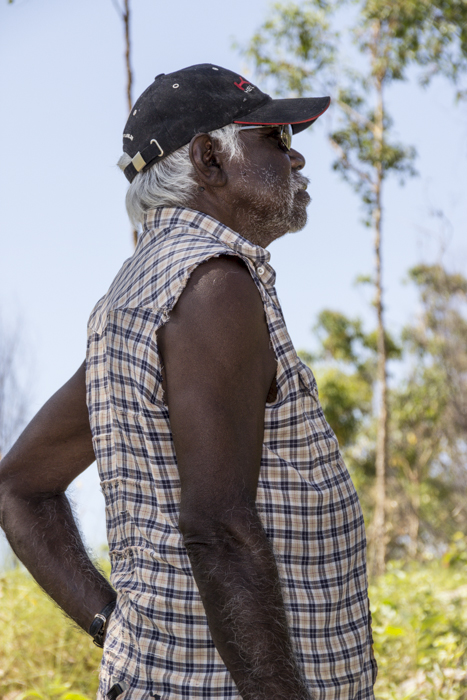
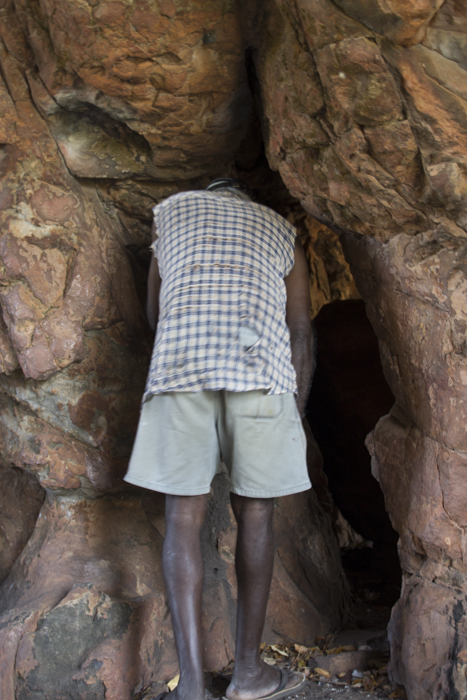
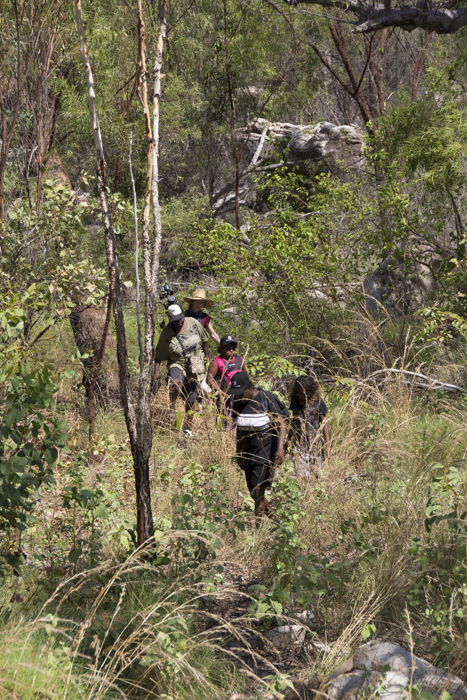

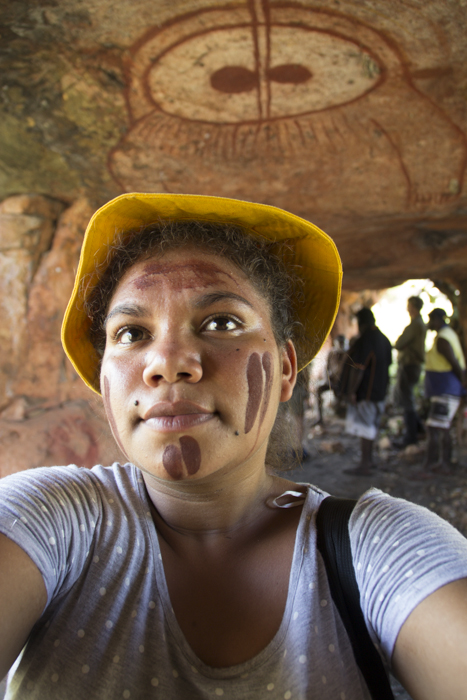
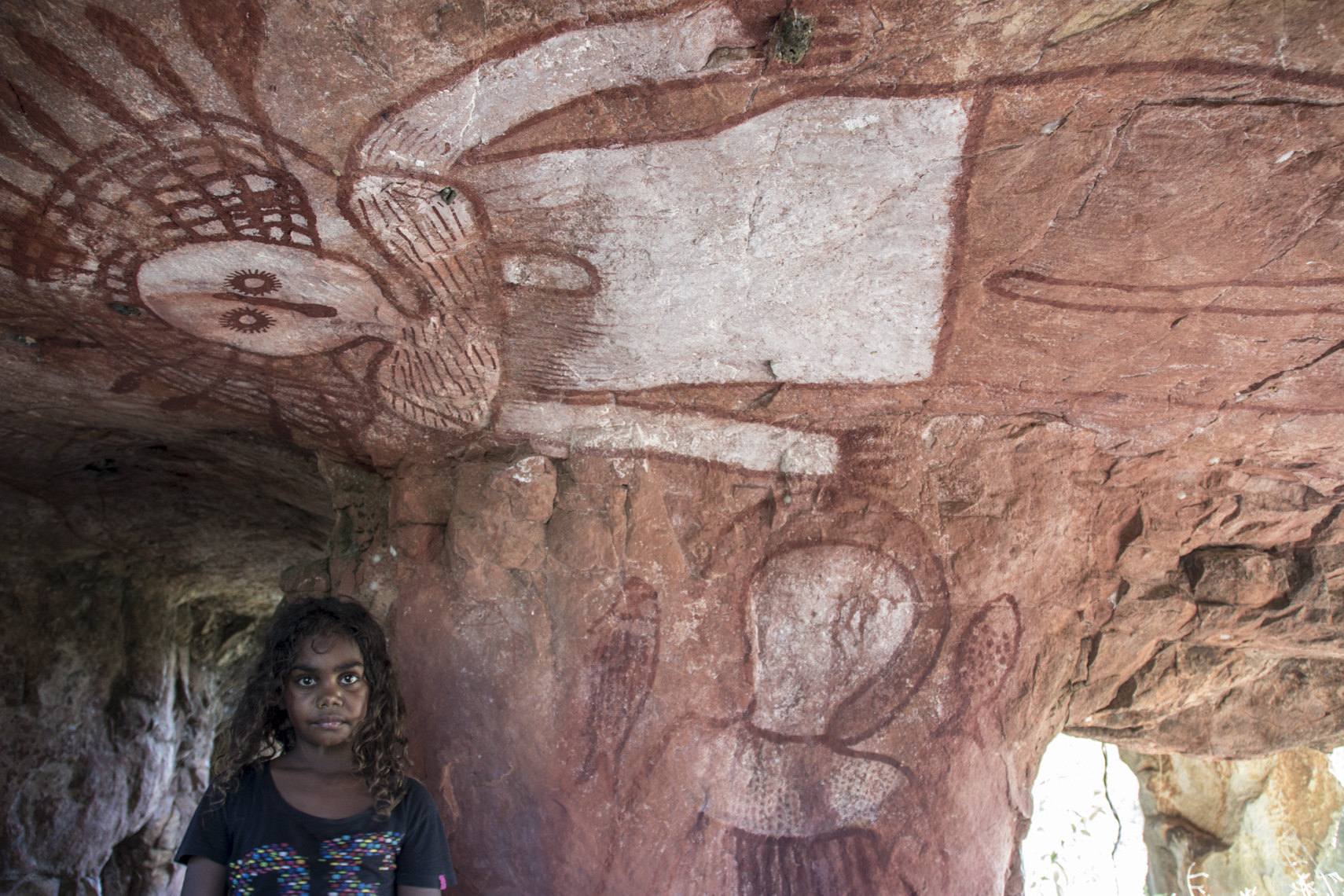
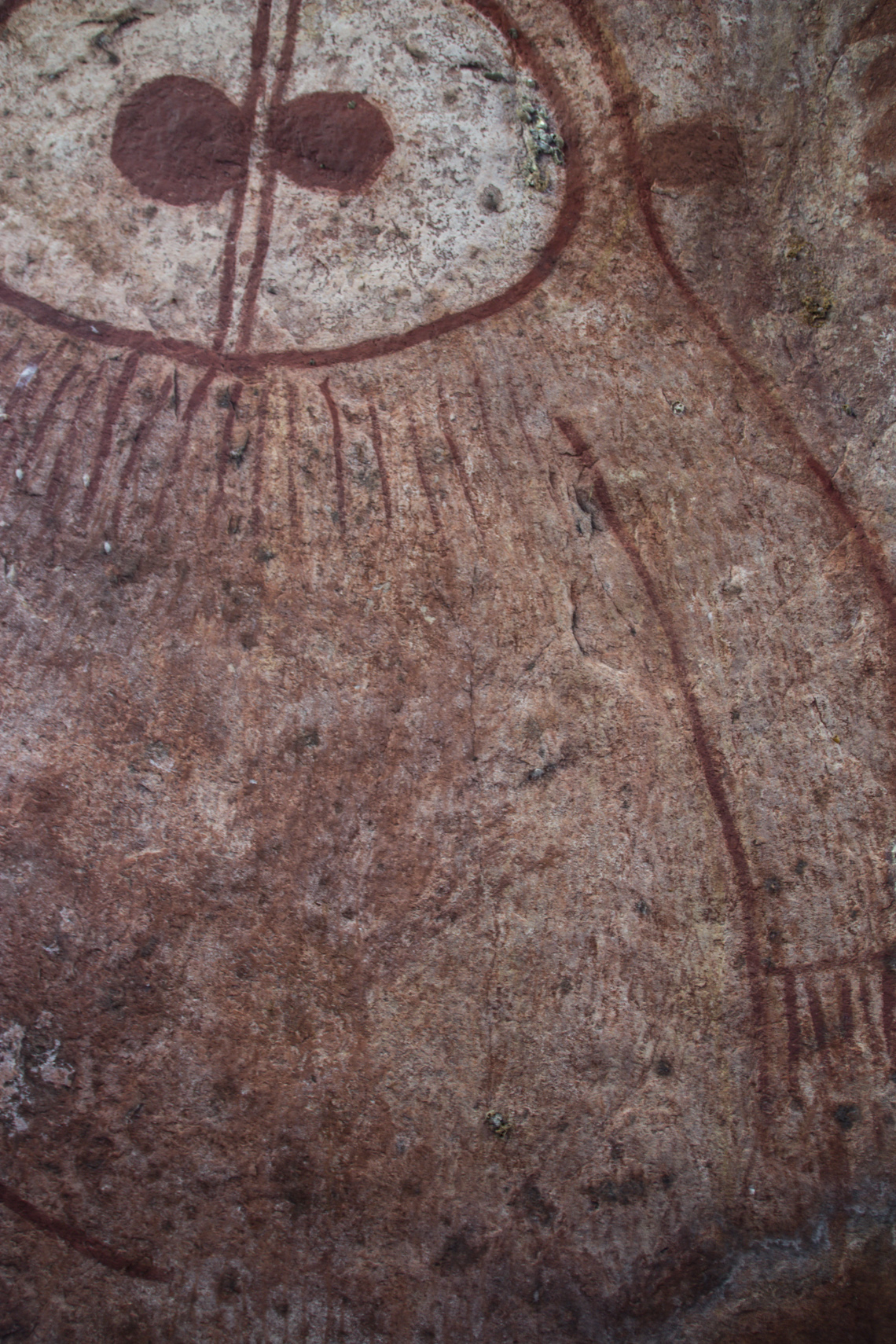
cave entrance
Large projections in blacked out gallery space. Supported by a subtle soundscape created by Radio 6DBY in collaboration with Dolord Mindi.
We are working with Lightwell in Sydney to develop the automated 3D model fly through the cave for Desert River Sea. Now that approval has been granted from Worrorra Elders, there are only a few steps remaining to bring this project to completion:
- Lightwell to experiment with outside scenery options in consultation with Dolord Mindi
- Lightwell to export automated pathway file, this is what will be projected in the gallery space.
